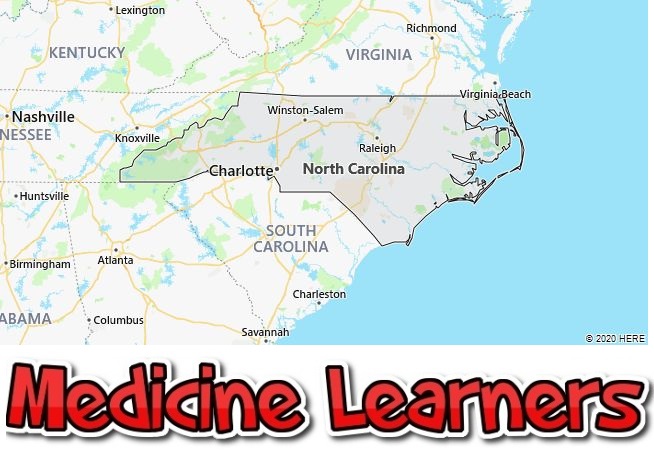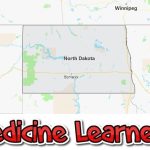List and profile of top medical colleges in North Carolina, including postal codes, mailing address, official website, M.D. curriculum information and teaching hospitals within the state of North Carolina. Screenshot for each medical program is also included. See below for brief information of each medical school and related resources on the Internet about North Carolina and medical education.
Duke University School of Medicine
| Teaching Hospitals | |
|---|---|
| Primary teaching hospitals affiliated with this medical school where clinical teaching or training is carried out. | |
| Teaching hospitals | Duke University Hospital. |
| Curriculum | 2301 Erwin Road Durham, NC 27710 |
| (Data appear as originally submitted by this school.) | |
| Four-year M.D. program curriculum | Duke University School of Medicine offers an educational program unlike any other in the country. The basic sciences are taught in one year. The core clerkships are completed in the second year. The third year is devoted to scholarly investigation through one-on-one mentored research or the pursuit of a Masters or PhD degree. Elective clinical rotations are fulfilled in the fourth year. |
East Carolina University Brody School of Medicine
| Teaching Hospitals | |
|---|---|
| Primary teaching hospitals affiliated with this medical school where clinical teaching or training is carried out. | |
| Teaching hospitals | Pitt County Memorial Hospital. |
| Curriculum | Address: 600 Moye Blvd, Greenville, NC 27858 |
| (Data appear as originally submitted by this school.) | |
| Four-year M.D. program curriculum | The curriculum provides a logical integration of basic science and clinical science knowledge over the four year span. Early experience in the patient care settings is achieved through preceptorships throughout the state and through contact with both standardized and clinical patients in the first two years. Innovative teaching methods are employed. |
University of North Carolina Chapel Hill School of Medicine
| Teaching Hospitals | |
|---|---|
| Primary teaching hospitals affiliated with this medical school where clinical teaching or training is carried out. | |
| Teaching hospitals | Carolinas Medical Center, Heritage Hospital, Mission Memorial Hospital, Moses H. Cone Memorial Hospital, Nash Health Care Systems, New Hanover Regional Medical Center, UNC Hospitals, Wake Medical Center. |
| Curriculum | Address: 321 S Columbia St, Chapel Hill, NC 27516 |
| (Data appear as originally submitted by this school.) | |
| Four-year M.D. program curriculum | UNC School of Medicine is committed to graduating a diverse body of physicians dedicated to public service and leadership in research and patient care. A new curriculum provides an integrated, self-directed approach to learning, with opportunities to explore areas of professional interest, community service, and research. 95% of our senior graduates were matched in 2008. |
Wake Forest University Baptist Medical Center
| Teaching Hospitals | |
|---|---|
| Primary teaching hospitals affiliated with this medical school where clinical teaching or training is carried out. | |
| Teaching hospitals | Forsyth Medical Center, North Carolina Baptist Hospital. |
| Curriculum | Address: 1 Medical Center Blvd, Winston-Salem, NC 27157 |
| (Data appear as originally submitted by this school.) | |
| Four-year M.D. program curriculum | The curriculum is organized to meet the seven goals of the undergraduate medical education program: the development of proficiency in self-directed and lifelong learning skills, the acquisition of appropriate core biomedical science knowledge, clinical, problem solving/clinical reasoning, interviewing & communication skills, information management skills, and professional attitudes and behavior. |
About North Carolina
North Carolina History
Although North and South Carolina were the first of the 13 founding states to declare independence from the British mother country in 1776, English traditions and customs are still clearly evident today. The name “Carolina” goes back to the English King Charles II, who thought of naming this colony to his father, because Carolina is the English version of the Latin name Charles I, Carolus I. He was sitting on the when this new world was discovered English throne and was responsible for the procurement rights in the individual territories. One of the discoverers is the famous sailor Sir Walther Raleigh, who is honored with the capital of the same name.
In 1860, the disagreement of the American Union also caught up with North Carolina as a traditional slave-holding state. Initially, this state stayed away from the spin-off activities of the sister state of South Carolina and a few other southern states, because mostly farmers without slave husbandry lived here. Because the secession movement, however, emanating from the sister state, President Abraham Lincoln threatened to march in there, which was the initial spark for joining the Confederation. After the end of the civil war, North Carolina developed economically and industrially positively, the cotton and textile industry was dominant. Clarence Lightner made history in 1973. He was the first black man to be elected mayor of a southern city in Raleigh despite the white majority of the population.
The Cherokee Indian tribe was also at home here until these Indians were expelled or almost exterminated by the white settlers. The path that the Indians traveled to the reserves assigned to them was called the “path of tears”. However, the Cherokee partially returned to the place of their ancestors in the 20th century. Most of them live in Qualla Boundary, where an open-air museum commemorates the long history of the Cherokee. Visitors can purchase handicrafts and learn more about the culture. The outdoor musical “Unto these hills” honors the indigenous people and tells their story vividly and emotionally.
A pleasant climate in every season
The coastal landscape is influenced by the Atlantic, which ensures a pleasant, temperate climate in the summer months. The winters are also mild here. Inland, the summer months can be dry and hot. The mountain region is somewhat cooler, but in contrast to the mountain regions of the northern states, it has a comparatively pleasant climate. Overall, North Carolina has no cold and snowy winters. This season is completely ice-free, from November to February the temperatures are around 10 degrees, the thermometer rarely falls below the 4-degree mark.
A persistently positive population development
North Carolina has approximately nine million residents. Unlike South Carolina, North Carolina is more populated, more urban, and more modern. Most major cities are located in the three metropolitan areas and the state can look forward to regular population growth. Already in the Wilhelminian period around 1790, more than three million people lived here. Since then, North Carolina has had a regular population growth of between 13 and 21 percent. An exception was the year 1880 with an immigration rate of 30 percent. During this time, however, the USA generally saw a large wave of immigration from European countries, from which many states could benefit. Whites make up the largest share of the population with 74 percent, followed by African Americans with 21.7 percent and Latin Americans with 7 percent. The rest of the population is made up of Asians and Indians.
Attractions that every vacationer should visit
Baltimore House
One of the most popular destinations is Baltimore House. This 250 room property is surrounded by a large park. It was built by George Vanderbilt, who had this chateau built around the French style at the end of the 19th century. Baltimore House is the largest privately owned property in the United States. Today it houses a hotel, a renowned winery, various shops and restaurants.
Outer banks
The Outer Banks are a 280 km long and narrow island chain offshore. It forms a natural barrier between the Atlantic and the coastal region on the mainland. Here are the largest lagoons in the United States, the Albemarle Sound in the northern part of the island and the Pamlico Sound in the southern part.
Great Smoky Mountains National Park
North Carolina shares the Great Smoky Mountains National Park with Tennessee. The entrances are in Knoxville, Tennessee and Asheville in North Carolina. The forest is one of the oldest forests in the world and is also the largest jungle area in the eastern United States. Traffic is mainly limited to the main roads, but the 450 kilometers of secondary roads and the 1,400 kilometers of hiking trails are less frequented.
U.S. National Whitewater Center
It is a mixture of outdoor, adventure and climbing park, which is a popular destination for families and sports fans. The white water trail and a treetop path are a particular challenge.
Cape Lookout National Seeshore
This group of three islands, the Outer Banks, offers visitors a versatile destination for various water sports and for collecting shells. The possibility of observing the bird life is particularly interesting. Wild horses roam the Crystal Coast.
Jockey’s Ridge State Park
At this point is the largest sand dune on the east coast. Jockey’s Ridge State Park is an attractive destination for hikers and paragliders. Here you can fly kites or just enjoy the extraordinary surroundings.









